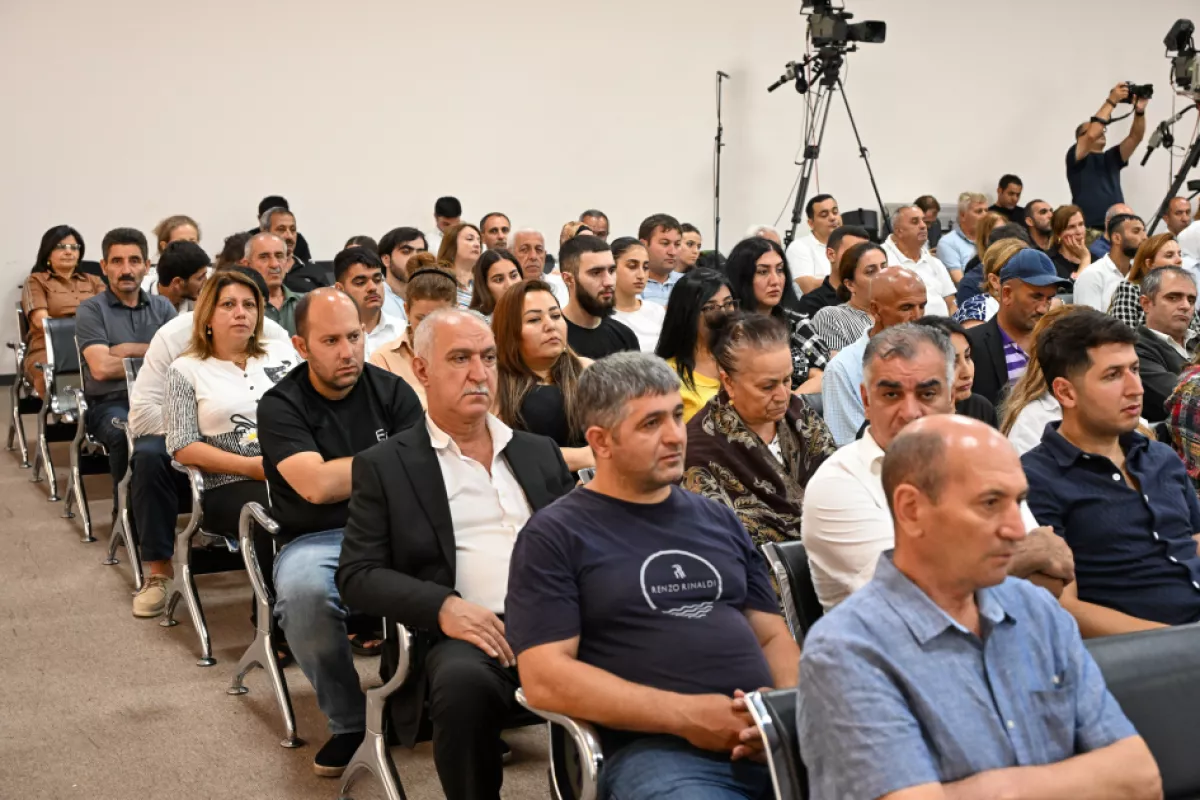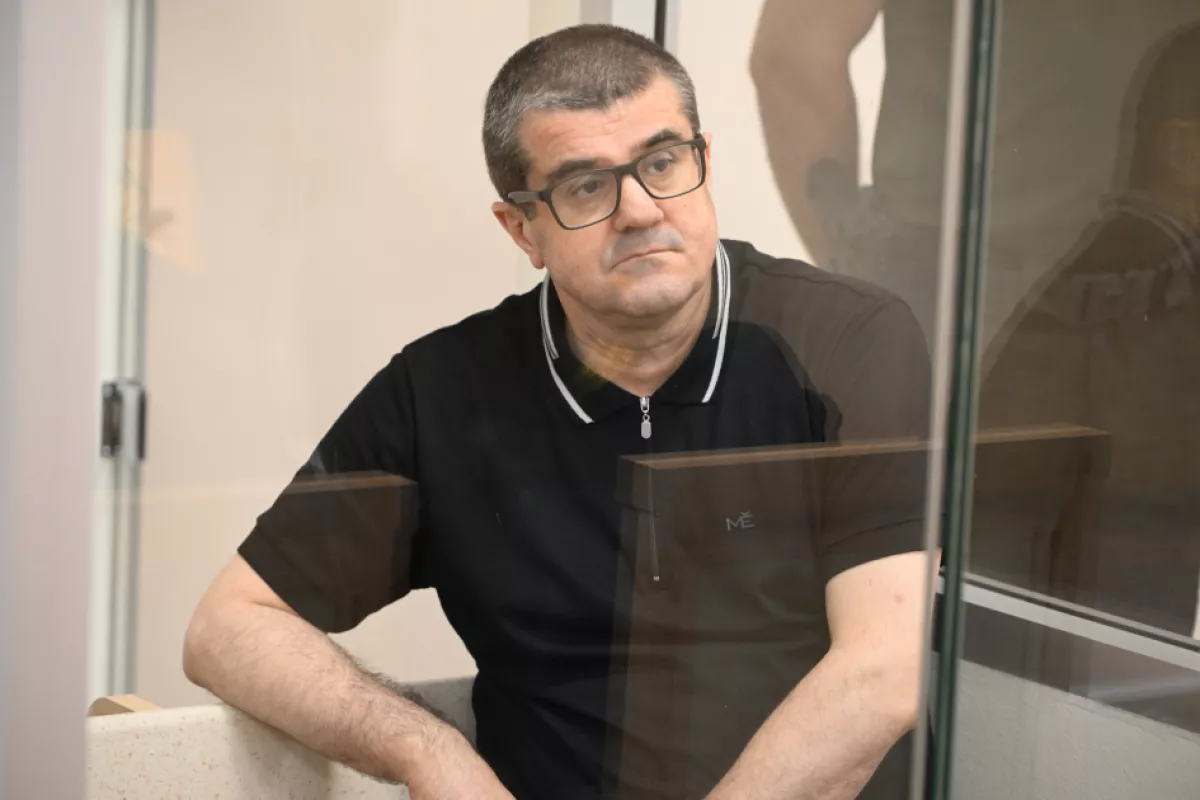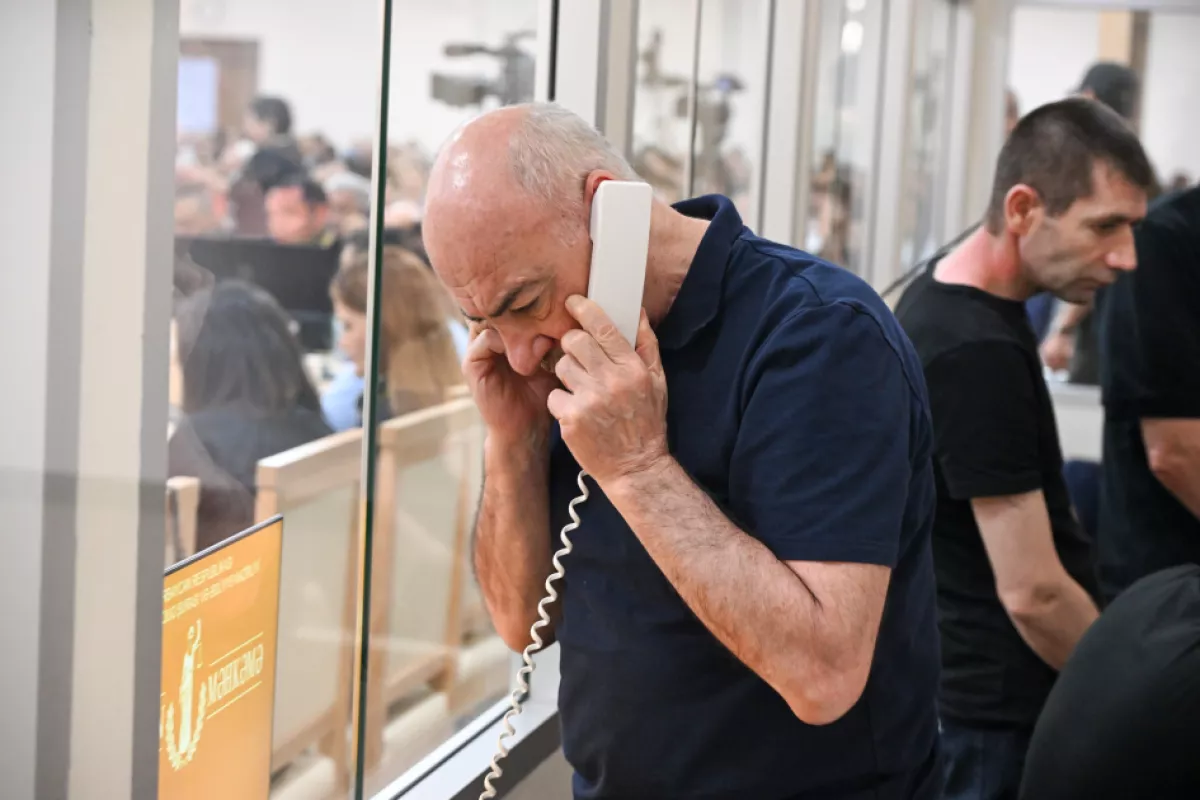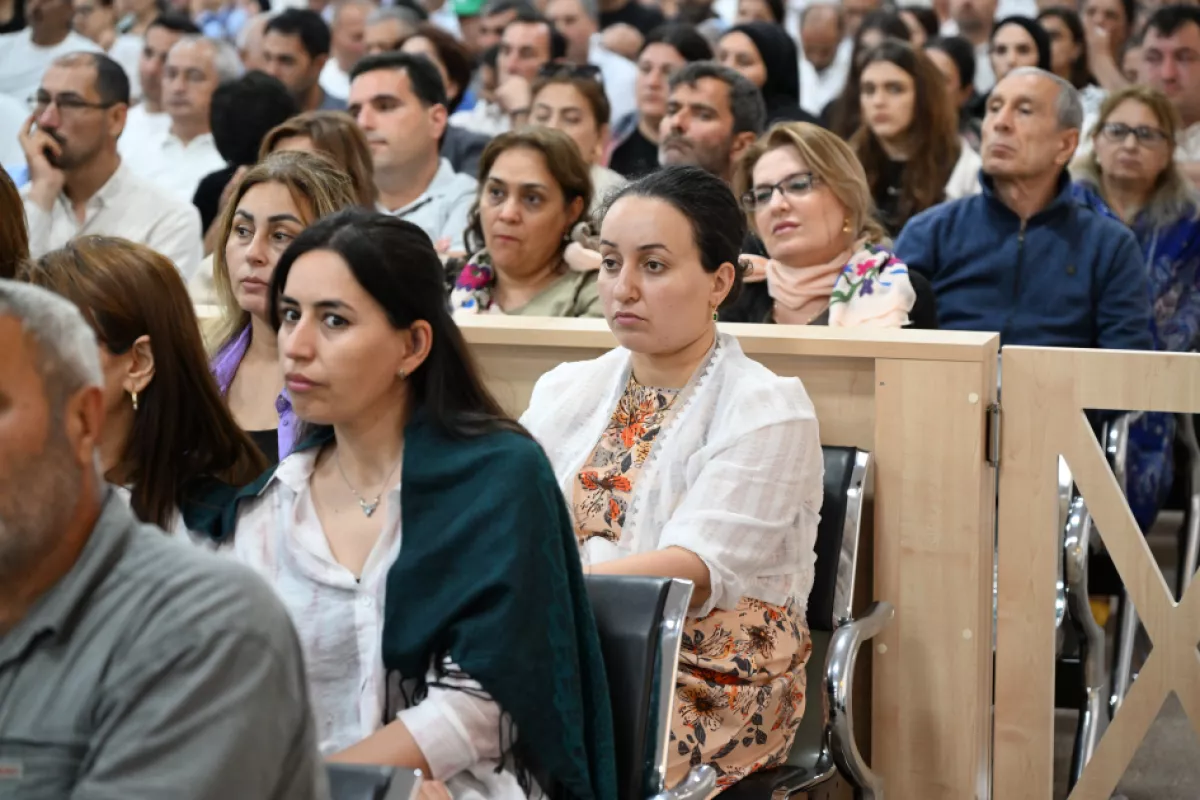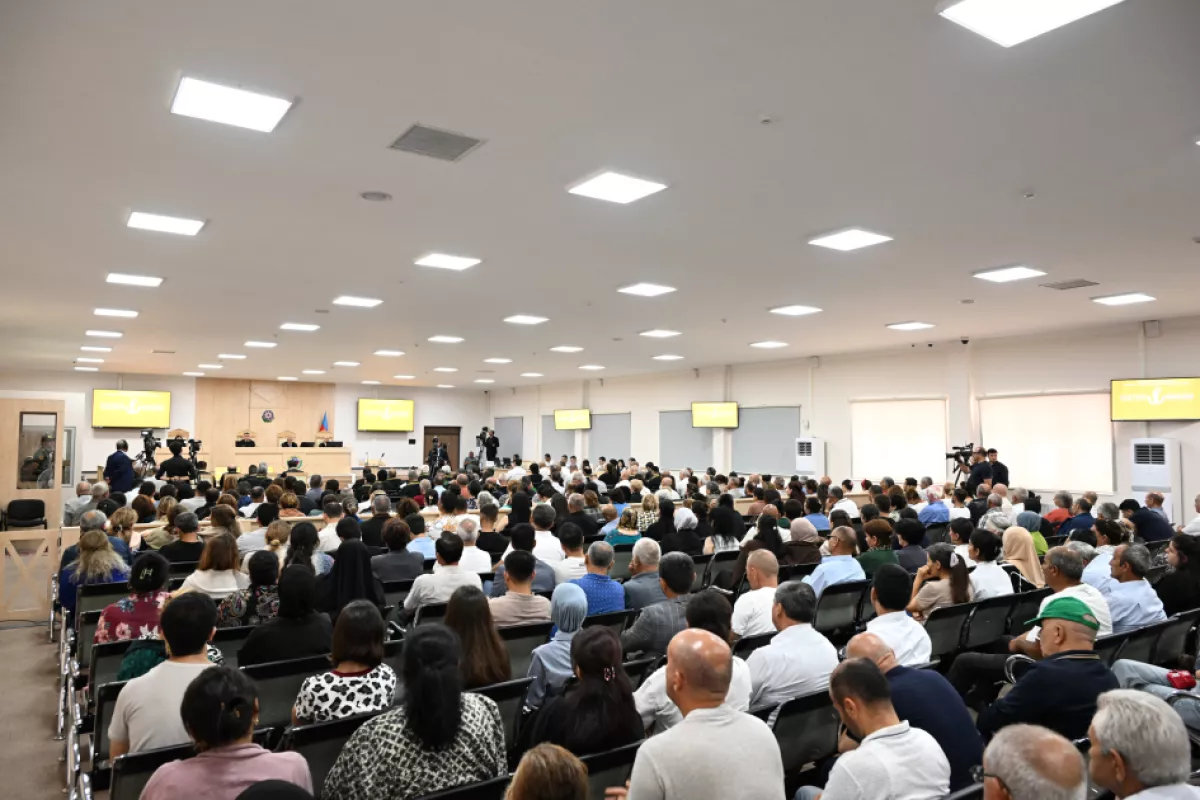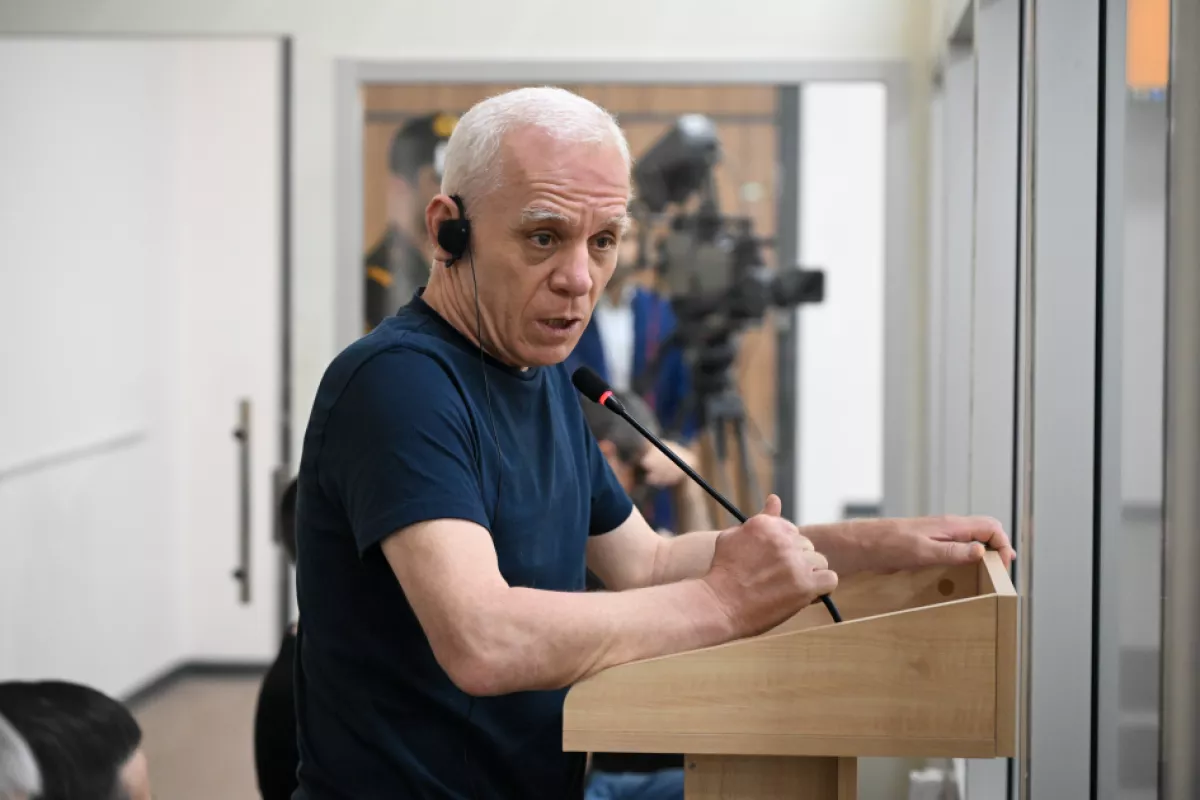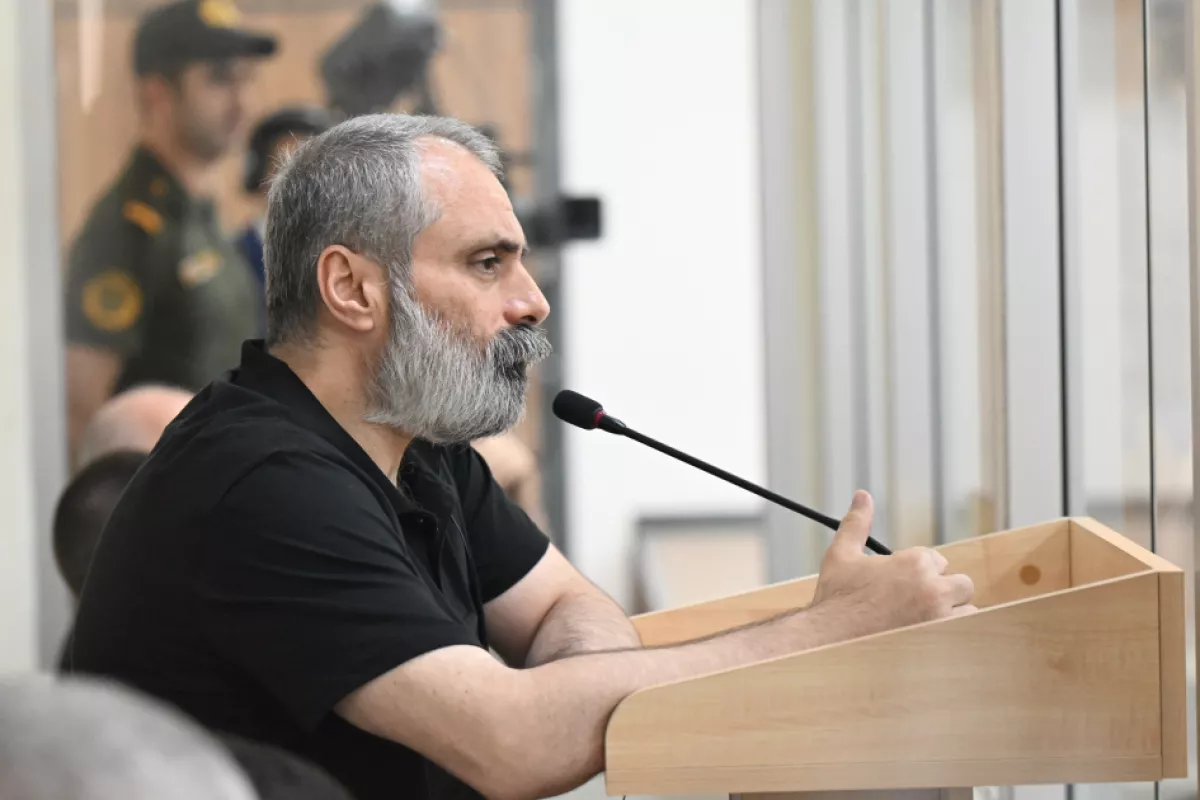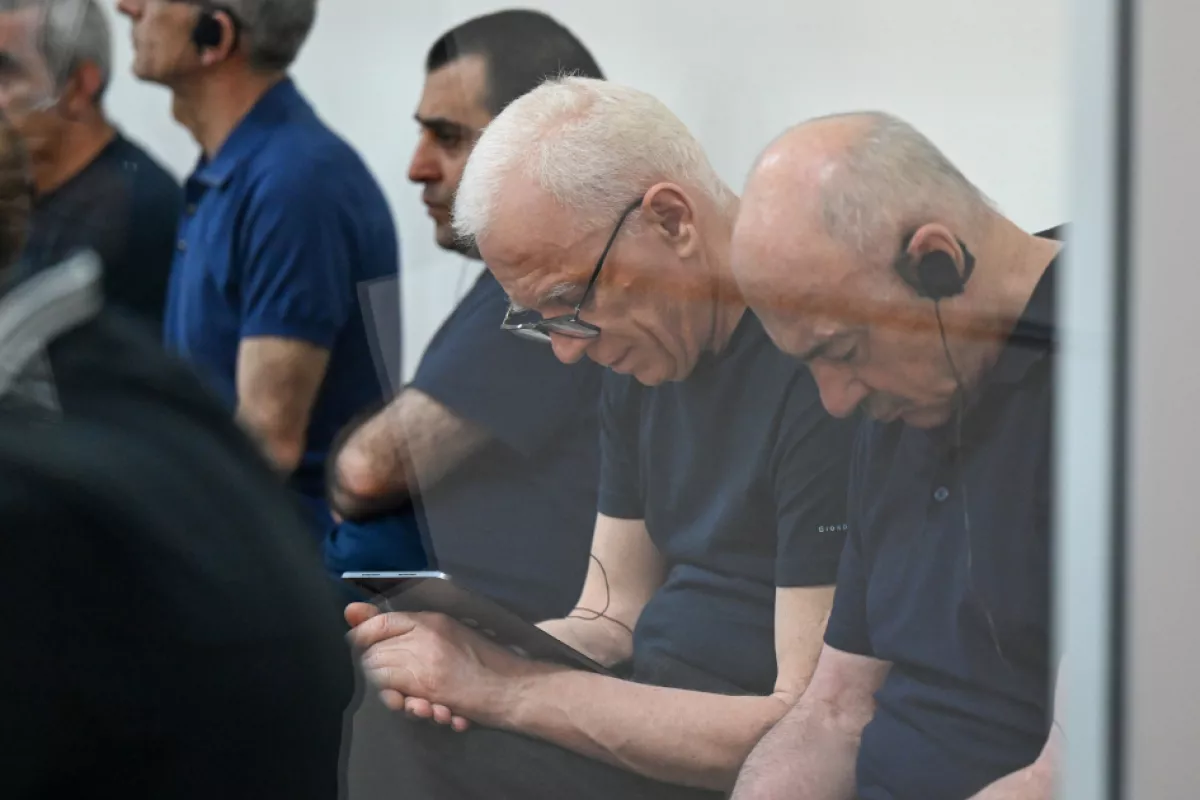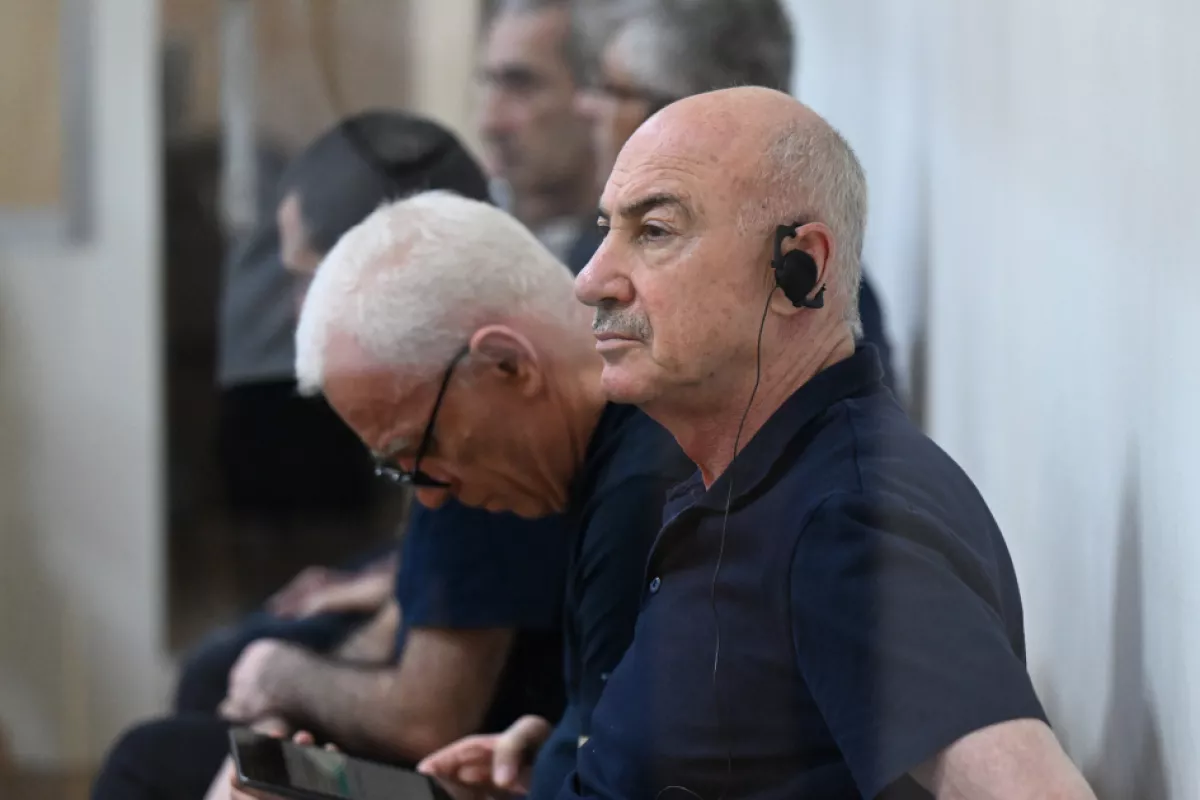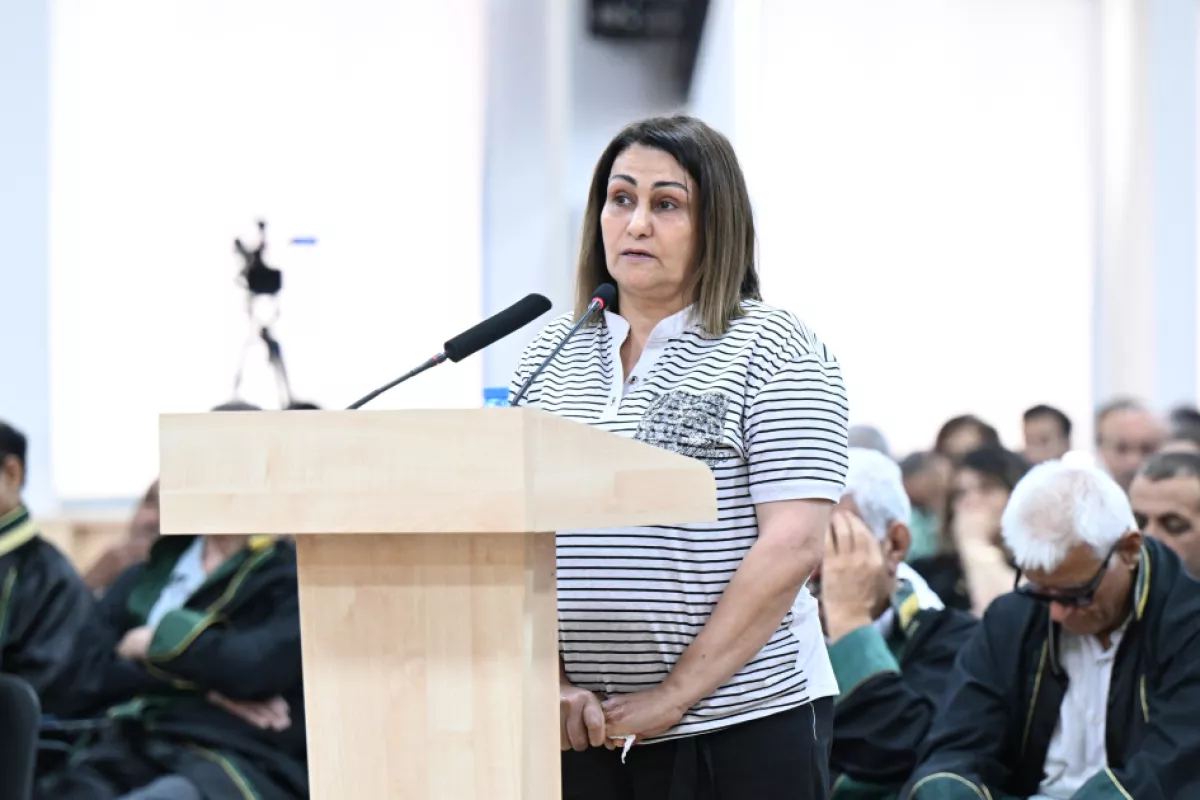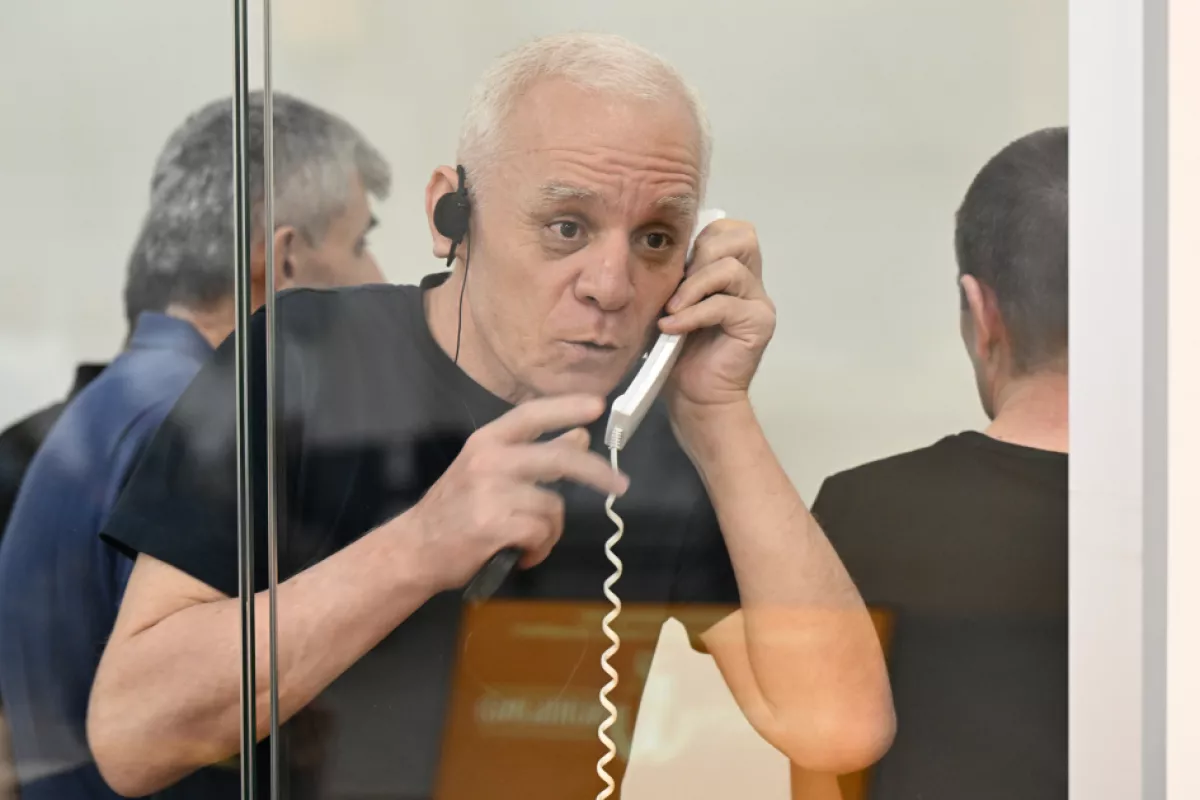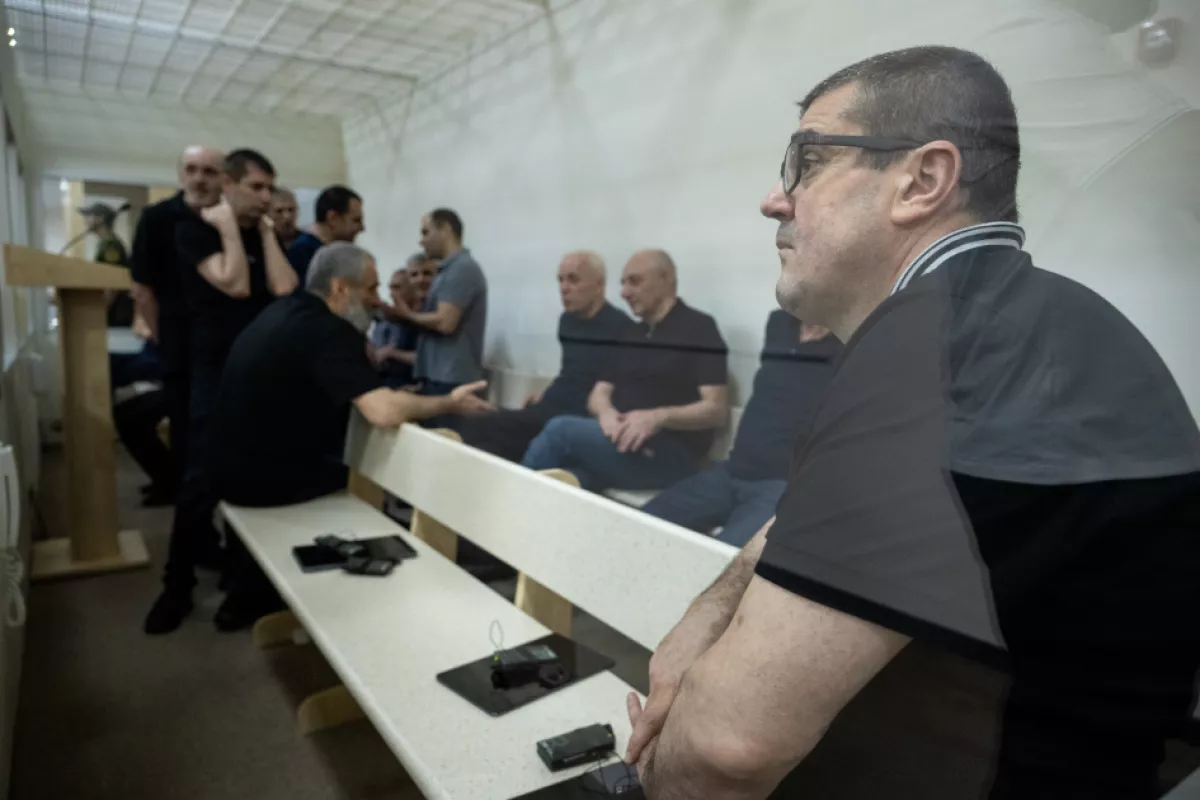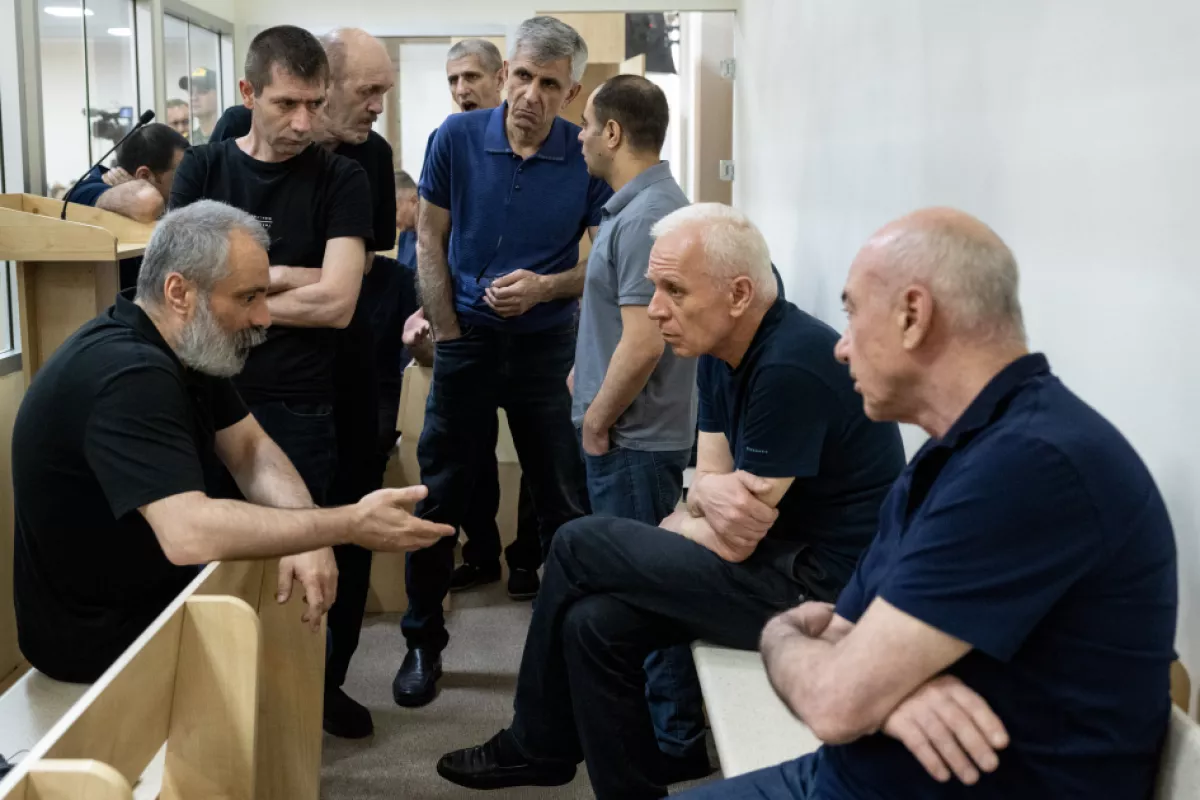Survivors testify on Khojaly genocide, Kalbajar captivity, and 44-day war atrocities in Baku hearing PHOTO
On July 22, an open court hearing continued in the criminal case against citizens of the Republic of Armenia, including Arayik Harutyunyan, Arkadi Ghukasyan, Bako Sahakyan, Davit Ishkhanyan, David Babayan, Levon Mnatsakanyan, and others. They stand accused of committing crimes against peace and humanity, war crimes - including the preparation and conduct of aggressive war - genocide, violations of the laws and customs of war, terrorism, financing of terrorism, the forcible seizure and retention of power, and other serious offenses stemming from Armenia’s military aggression against Azerbaijan.
The hearing, held at the Baku Military Court under the presidency of Judge Zeynal Aghayev, with Judges Jamal Ramazanov and Anar Rzayev (reserve judge Gunel Samadova), ensured that each defendant was provided with an interpreter in their preferred language and defense counsel, Caliber.Az reports via local media.
The session was attended by the accused, their legal representatives, several victims, their legal successors or representatives, and state prosecutors.
Judge Zeynal Aghayev introduced the members of the judicial panel, prosecutors, interpreters, and others to victims participating for the first time, explaining their rights and obligations under the law.
Victim Kanan Isayev testified that he received a shrapnel wound due to the provocation committed by the Armenian armed forces in the Fuzuli district during the April battles in 2016.
Victim Safar Hajiyev reported receiving a gunshot wound due to a fire opened by the Armenian armed forces while serving in the military in 2011. Responding to a question from Tarana Mammadova, the public prosecutor, Hajiyev mentioned that the incident occurred during the ceasefire violation by the Armenian armed forces.
Vladislav Alimov reported sustaining a closed head injury during the battles in Shusha in 1992, when was captured by the Armenian armed forces and brought to Khankendi. He was released from captivity and handed over to the Azerbaijani side on October 6.
Vagif Ganbarov testified that he was captured in 1993 during battles with the Armenian armed forces in Kalbajar, taken to Yerevan and held in the Armenian State Security Service. Later, he was taken to the city of Gumru and held there. In captivity, he was committed to torture. Responding to a question from Vusal Aliyev, Senior Assistant to the Prosecutor General, he noted that he was handed over to Azerbaijan on May 12, 1995. In response to a question from the lawyer of the accused Bako Sahakyan, V. Ganbarov stated that he worked at the Deep Water Jackets Factory prior to being deployed.
Aghasafar Shukurov emphasized that he was captured on February 14, 1994, after sustaining a closed head injury during the battles in the Kalbajar district. He was initially held in Kalbajar for a short time, then transferred to the pre-trial detention center in Khankendi, and later to the Shusha prison, where he endured hars conditions. He was released on June 8, 1995.
Responding to a question from Tugay Rahimli, Assistant to the Prosecutor General for Special Assignments, A. Shukurov said that while in captivity, all Azerbaijanis - civilians and military personnel - were beaten. "Like the others, I endured regular beatings and torture. They beat me with the rifle butt, a shovel, a rebar, a baton. They broke every teeth in my mouth," he said.
Victim Shahla Talibova testified that she was expelled from her ancestral home in Armenia in 1988, and resettled in Shusha due to her husband’s job in Khojaly.
Victim Shahla Talibova testified that in 1988 they were deported from their ancestral homeland in Armenia, resettled in the Shusha district, and moved there because her husband worked in Khojaly. Talibova recalled that her 10-day-old baby suffered an eye injury when a stone was thrown at their bus amid the onset of violence against Azerbaijanis.
She described the events of the Khojaly genocide on February 25–26, 1992, recounting how she and her family escaped and hid in the forest for two days before managing to reach Aghdam. She added that several of her relatives were taken captive by Armenian forces, while others went missing.
Talibova said her children continue to suffer from severe psychological trauma as a result of those events.
Yegana Ibrahimova mentioned that when Armenian armed forces launched their attack on Kalbajar in May 1993, she was leaving the area in a KamAZ truck. The vehicle was fired upon by Armenian armed forces near an area called “Tunnel.” At that time, there were about 40 people in the KamAZ truk, including five of Y.Ibrahimova's relatives. During the attack, 15-year-old Y.Ibrahimova, along with her father, mother, and brothers, were injured. She was hit by eight bullets with, while her her 14-year-old brothers Mushfig was hit by 8 bullets. Her father Nadir Aliyev, mother Nushaba Aliyeva, and 11-year-old brother Tural Aliyev were burned to death in the car, their bodies remain missing.
She, along with her brother Mushfig, were taken hostage. Some of the hostages, including Y. Ibrahimova, were held in the Heyvalı village. During her captivity, she was also detained in Khankendi and Khojaly. Responding to questions from State Prosecutor Vusal Abdullayev, Y. Ibrahimova underscored that in 1994 she was first taken to Armenia for a prisoner exchange, then transferred to the Rostov region of Russia, and subsequently released.
In his testimony, Hasan Gojayev mentioned that he was captured by Armenian armed forces during the battles naear Kalbajar on the night of February 12-13, 1994 and taken to the village of Susuz, where he and other Azerbaijani prisoners were subjected to torture and being hung by their feet. His leg was frozen badly, as a result of the torture both his legs were amputated by the Armenians. Gojayev was held in Shusha and Khankendi, and handed over to the Azerbaijani side on March 26.
In response to a question from the accused David Manukyan, H. Gojayev said that both of his legs are currently prosthetic.
Rafig Ismayilov testified he was captured on August 24, 1993, during fierce battles in Fuzuli, receiving 6 bullet wounds. He added that while he was wounded, Armenian soldiers beat him and kicked him in the places where he had been shot.
Responding to questions from Nasir Bayramov, head of the Prosecutor General's Department for State Prosecution, Ismayilov stressed that he escaped captivity on September 4 that year in an Armenian armed forces’ "Niva".
Victim Elshan Talibov testified that on May 29, 1990, he was taken hostage by Armenians in the Aliaghali village of Aghdam, along with his fellow villagers Nuru Jafarov and Ziyad Jafarov. They were beaten during their captivity, and their money and belongings were confiscated. Five days later, they were handed over to the Azerbaijani side in exchange for 55 head of cattle.
Huseyn Aliyev underscore that on February 1, 1995, while on military service, he was taken prisoner by the Armenian armed forces servicemen in Tartar after getting lost in foggy weather. He was handed over to the Azerbaijani side 1 year and 4 months later.
Ramal Hajiyev testified that he was captured by the Armenian armed forces in the Abdurrahmanli village of Fuzuli district, in foggy weather on October 15, 2000. He was released on January 14, 2001.
In her testimony, Sahida Alakbarova underlined that she was born in the city of Khojaly and lived there until the night of February 25-26, 1992. During the genocide, she was taken hostage in a place called Garagaya and held at the Asgaran Police Department. After the city was occupied, her house and all her belongings were seized by the occupiers.
Bakhtiyar Shabiyev recounted being captured by the Armenian armed forces in Lachin during the war in 1993. In captivity, he was held in Yerevan, being committed to beatings and torture during that time. He was released in May 1994.
Iltizam Abishov testified that he was taken hostage during the genocide while he was an IDP from Khojaly and brought to the Asgaran police station. After a week of beatings and torture, he was released.
Ilgar Abishov confirmed the statements of his brother Iltizam Abishov, who testified before him.
In his testimony, Ilham Aghamaliyev mentioned that he was taken captured by the Armenian armed forces in May 1993. First, he was taken to Basarkecher, then to Yerevan. He was endured torture and beatings. Two years later, he was released and repatriated to Azerbaijan.
In their testimonies, Javid Muzaffarzade, Anar Aliyev, Munasib Mirzayev, and Allahverdi Jabbarov stated that they were captured in different areas.
Elgun Alakbarov testified that in 2021, while working as a tractor driver at a cotton factory in Tartar, he was injured after driving over an anti-tank mine planted by Armenian armed forces.
In his testimony, Vasif Guliyev mentioned that he was injured in 2020 during the 44-day war when a shell fired by the Armenian armed forces landed into his backyard in the Gapanli village in the Tartar district,.
Polad Ismayilov testified that on April 2, 2024, he stepped on a mine while grazing animals in the Chayli village in the Tartar district. During the incident, he, along with his fellow countrymen Arzuman Tagizade and Elmin Baghirov, were wounded.
Sabuhi Bakhshaliyev testified that during the 44-day war in 2020, on September 28, he sustained a shrapnel wound when a shell struck his home in the Eskipara village in Tartar district, destroying the house and killing his livestock.
Khayal Babayev underlined that in April 2021, he was injured in Sugovushan during demining operations following the explosion of a landmine planted by Armenian armed forces.
Ferman Mehdiyev emphasized that in February 2005, he was wounded when Armenian armed forces shelled the Qapanli village of the Tartar district, where he lived.
Vusal Abbasov testified that he sustained severe injuries from a mortar explosion fired by Armenian forces during the April battles in 2016. He is currently classified as an individual with a second-degree disability.
Fizuli Mammadov said that he was severely wounded by artillery fire from Armenian armed forces while burying his aunt, who died on October 15, 2020, at the cemetery in Tartar during the 44-day war.
In his testimony, Rashad Guluyev mentioned that he was injured on October 16, 2020, during the 44-day war, when a shell fired by Armenian forces exploded in Barda.
Ganbar Asadov noted that he sustained serious injuries when a shell hit the district center as while e was traveling in an ambulance as a staff member of the Tartar District Central Hospital.
Agha Suleymanov reported being injured on October 14, 2020, when Armenian armed forces shelled the Duyarli village in the Tartar district, where he lived.
Mushfig Farajov testified that two artillery shells hit his house in Tartar on October 9, 2020.
Vagif Akbarov mentioned that while working on demining operations as an ANAMA employee, he was injured in a mine explosion in Aghdam on December 5, 2023, resulting in the amputation of part of his right leg.
Mamed Ahmadov said that he was injured on April 2, 2016, when the Shikharkh village in Tartar district, where he lived, was targeted by artillery.
Yashar Mammadov confirmed witnessing the Aghdaban massacre during the night of April 7–8, 1992. He said the village of 130 homes was set ablaze, and innocent civilians lost their lives.
Aladdin Mammadov underscored that during the April battles in 2016, a shell hit the Garaaghaji village in Tartar district, where he lived, causing damage to his house.
Kamal Aliyev testified that he left 14-room house behind during the occupation of Lachin in 1993, adding that on April 2, 2016, a shell struck the village of Shikharkh, causing his house to burn down.
The victims also responded to questions from the accused, their defense lawyers, and their representatives.
The trial is scheduled to continue on July 24.
Fifteen defendants of Armenian origin are accused in the criminal case concerning numerous crimes committed during the aggressive war waged by the Armenian state—including the aforementioned criminal association—on the territory of Azerbaijan, in violation of domestic and international legal norms. These crimes were committed for the purpose of military aggression against Azerbaijan and were carried out under the direct leadership and participation of the Armenian state, officials of its state institutions, its armed forces, and illegal armed formations, through their written and verbal orders, instructions, and guidelines; material, technical, and personnel support; centralized management; as well as under strict control and under the leadership and direct or indirect participation of Robert Sedraki Kocharyan, Serzh Azati Sargsyan, Vazgen Mikaeli Manukyan, Vazgen Zaveni Sargsyan, Samvel Andraniki Babayan, Vitali Mikaeli Balasanyan, Zori Hayki Balayan, Seyran Musheghi Ohanyan, Arshavir Surenovich Garamyan, Monte Charles Melkonyan, and others.
The following individuals—Arayik Vladimiri Harutyunyan, Arkadi Arshaviri Ghukasyan, Bako Sahaki Sahakyan, Davit Rubeni Ishkhanyan, David Azatini Manukyan, Davit Klimi Babayan, Levon Henrikovich Mnatsakanyan, Vasili Ivani Beglaryan, Erik Roberti Ghazaryan, Davit Nelsoni Allahverdiyan, Gurgen Homeri Stepanyan, Levon Romiki Balayan, Madat Arakelovich Babayan, Garik Grigori Martirosyan, and Melikset Vladimiri Pashayan—are being charged under the following articles of the Criminal Code of the Republic of Azerbaijan: Article 100 (planning, preparing, initiating, and waging a war of aggression); Article 102 (attacking persons or organizations enjoying international protection); Article 103 (genocide); Article 105 (extermination of the population); Article 106 (enslavement); Article 107 (deportation or forced displacement of population); Article 109 (persecution); Article 110 (enforced disappearance of persons); Article 112 (deprivation of liberty contrary to international law); Article 113 (torture); Article 114 (mercenary service); Article 115 (violation of the laws and customs of warfare); Article 116 (violation of international humanitarian law during armed conflict); Article 118 (military robbery); Article 120 (intentional murder); Article 192 (illegal entrepreneurship); Article 214 (terrorism); Article 214-1 (financing terrorism); Article 218 (creation of a criminal organization); Article 228 (illegal acquisition, transfer, sale, storage, transportation, and possession of weapons, ammunition, explosives, and devices); Article 270-1 (acts threatening aviation security); Article 277 (assassination of a state official or public figure); Article 278 (forcible seizure and retention of power, forcible change of the constitutional structure of the state); Article 279 (creation of armed groups not provided for by law); and other articles.




